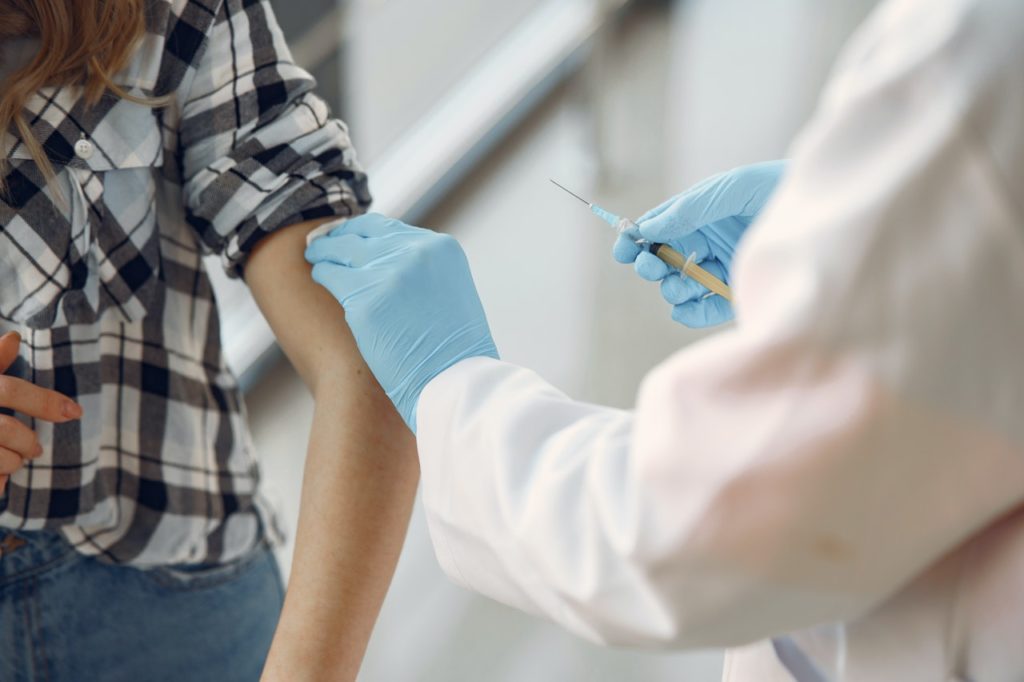At some point in our lives, we’re bound to get sick. But when we get sick, our body will also learn to adapt and fight back most of these disease-causing microbes through our immune system. As the name suggests, our “immune” system will usually learn about certain types of diseases and foreign objects that might get into our bodies by fighting them. However, this does not mean that everyone will have a strong immune system that can fight diseases.
In most cases, people who have weaker immune systems or are immunocompromised won’t fight off diseases as effectively as those with normal immune systems. In more extreme cases, immunocompromised individuals can easily get more serious symptoms from common and “weak” health complications.
Let’s face it: nobody wants to get sick, especially when certain types of diseases can cause permanent damage to the body. Fortunately, vaccines have been saving millions of lives from a variety of diseases since its invention. In fact, the most medical community would say that vaccines are known for being one of the most important medical innovations and will still be considered one of the most revolutionary advancements in medical technology.
Vaccine and Misinformation
Still, a good majority of the public seems to be in the dark when it comes to vaccines, especially when there is widespread misinformation regarding vaccines’ use and safety. What’s a great way of countering misinformation and organizations that are peddling myths about vaccines? Having effective and comprehensive information drive through education videos can help build trust and minimize hesitancy from skeptics. Fortunately, motion graphics studios can help with great content for information drives and infomercials. After all, educating the public is the best way of making them aware of the benefits that vaccines can give.
But other than having a comprehensive information campaign, we’re here to answer some of the most important questions regarding vaccines. Understanding vaccines and medicine can help you understand your body more and is key to maintaining good health. Here’s what you’ll need to know
Vaccines and Disease Prevention
But before we can enumerate the different types of vaccines, we have to answer the elephant in the room: how do vaccines protect people from diseases? Well, the process is actually interesting.
As most of us know, the human body will usually adapt to its environment, both physically and mentally. However, someone with a weak immune system won’t be able to handle diseases in the same way a fit and healthy immune system can. Simply put, a vaccine is a type of medicine that carries a “weakened” version of the disease. This is injected into the body, but some vaccines are taken orally, and some vaccines being diffused through the skin.
When the immune system encounters these weaker versions of diseases, they’ll effectively counter various forms of diseases. This is a great way for the immune system to learn to fight off diseases without exposing the body to potentially dangerous symptoms.
But the most important part about vaccines is that much of the immune system will remember how to fight these diseases in future encounters. Potentially, most vaccines will last a lifetime, which can practically make the body “immune” to these diseases.

What Are Vaccines Made Of?
Vaccines aren’t necessarily made out of just a single chemical. How it’s made will be determined by the nature and the form of the disease. Here are different types of vaccines and how they’re made:
- Live attenuated vaccines – These are vaccines that carry weakened strains or versions that don’t activate any symptoms of viruses and bacteria. Since this is a weaker form of the infection, it won’t cause any problems to the human body, nor can it transmit to others. Still, this shouldn’t be given to immunocompromised individuals (or those with HIV) since they won’t be able to fight off the disease.
- Unactive Vaccines – As the name suggests, this is comprised of “dead” or non-reactive viruses and bacteria. If this is the case, there is little to no resistance that these microbes can pose to the immune system, making them great for individuals with weakened immune systems. But since it comprises dead bacteria and viruses, it might take a bit of time, and several booster shots are needed for the person to develop full immunity.
- DNA Vaccines – This is still within its experimental stages. Basically, this contains DNA strands from certain diseases and will incorporate into the immune system, helping develop resistance to it.
- Toxoid Vaccines – This is quite similar to how inactive vaccines work. Being comprised of dead bacteria and viruses means that the body can easily fight off diseases. But this won’t necessarily need booster shots since the body is training for an “actual” infection.
There are various vaccines catered towards different diseases, and they have saved millions of lives. As 2020 comes to an end, a vaccine will become the answer to the current public health crisis caused by COVID-19 around the world. That said, vaccines are definitely works of wonders. They have potentially saved billions of lives worldwide from diseases, not just from the Coronavirus pandemic, but from a multitude of other globe-spanning pandemics in the past few centuries.



